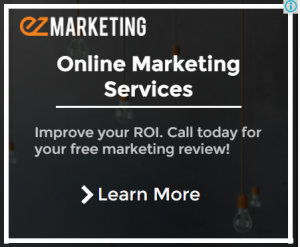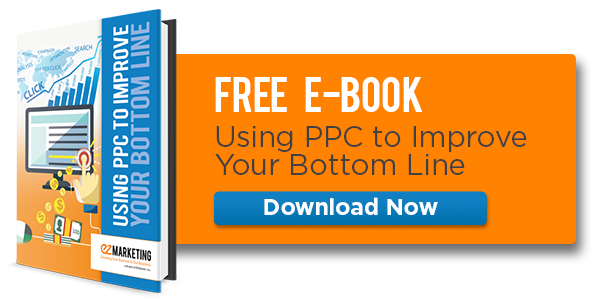PPC (Pay-Per-Click) advertising is one of the best ways to reach people performing searches on Google all over the country, and even all over the world. With Google AdWords, PPC ads appear as sponsored links on the results pages of Google above and to the right of organic search results. Your exposure is instant – and your ability to reach millions of people with your company is truly powerful.
Unlike a standard Pay-Per-Click campaign, remarketing using Google AdWords goes beyond appearing on search results pages. When you choose to advertise your company with remarketing, you’re able to reach potential customers who have already visited your site. Let’s take a look at how you really can reach more customers through remarketing:
What is Remarketing?
Remarketing is a method of advertising used to reach people who have already interacted with your business online – in one way or another. These actions could be a website visit, a product view, a form submission, or a click to your site from a search PPC ad. Remarketing allows you to reintroduce your product or service to someone who has already visited your site.
Advertising with PPC remarketing is an untapped marketing channel for so many businesses. Reaching the people that are already interested in your company is a priceless marketing investment. With Remarketing, you have the power to reignite interest in your product or service, driving traffic back to your website. This is how you can lead visitors back to your site, in hopes of nudging them towards a purchase.
How does Remarketing work?
Remarketing starts by gathering information about the people who have visited your site. The purpose of tracking users is to see how they behave on your website – like what pages they visit, where they exit, and how they all lead to a conversion. All of this tracking is made possible by scripts that are added to your site, running in the background of users’ sessions.
These same basic tracking principles that supply data for programs like Google Analytics are applied to remarketing. When a user visits your site, a cookie is dropped into their browser by the tracking script. Remarketing uses these cookies to add users to pre-defined lists based on criteria you set for your campaigns. If a user matches your criteria, like visiting your site without buying a product or filling out a contact form, they’re added to your list.
Users can stay in remarketing lists for up to 180 days. During this time, they’re eligible to see your display ads while browsing other sites within the Google Display Network. The whole purpose of remarketing is to gently nudge users closer to a sale or contact inquiry on your site. They’ve already visited your site, so you know they have interest in your company. More exposure with subtle reminders of your products or services is an effective way to lead users to a conversion.
Remarketing and the Google Display Network
To really understand the power of remarketing, you need to first understand Google’s Display Network. The Display Network is a collection of websites where ads are eligible to appear in sidebars, footers, headers, or even inside content like blog posts. Site owners opt into this network, making a profit by allowing Google to use their sites for display advertising. A typical display ad for EZMarketing looks something like this:

Ads like this are eligible to appear in a massive network of sites. The network is so massive that it’s made up of over 2 million sites. That means there are over 2 million advertising opportunities at your disposal with remarketing. From eCommerce stores selling knit hats to racecar blogs, the sheer diversity of sites is unmatched by other advertising platforms.
When you choose to advertise with remarketing on the Google Display Network, you have the ability to reach your ideal customer across millions of websites. You know you’re targeting the right people, because they’ve already visited your site. Other marketing channels and advertising tactics like link building or print media ads rarely have the ability to reach your target customer in such a scalable way.
Remarketing and scalability
In a world of smarter search engines and constantly updating algorithms, the gap between organic and paid search marketing grows smaller every day. Just 10 years ago, a business used to be able to run successful organic marketing campaigns like link building or content marketing with little effort. Those were the days of easy links and engagement, where automation got you results.
Today, organic marketing takes hard work from seasoned professionals. Getting links and mentions takes a vast network of connections and even greater patience. 10 years ago, paid advertising like PPC wasn’t necessary. In 2016, a well-rounded marketing plan isn’t complete without at least one Google AdWords campaign.
With Remarketing, all you need is a solid understanding of Google AdWords and time to put towards continuously optimizing your campaigns. Just like PPC advertising on the search network, running a successful remarketing campaign does take some time to manage and monitor. You don’t need endless resources to run an effective remarketing campaign, though. You can see real result and know exactly how much you’re spending every step of the way. Total flexibility and customization is what makes Remarketing such an excellent advertising channel for almost all businesses.
Remarketing and results
When flexibility and scalability combine, you’re left with an extremely cost-effective online advertising model. If you’re familiar with Google AdWords and PPC marketing, you know you set a budget for the month. This budget is then split into daily spends. Google will never exceed your monthly spend, ensuring your ad dollars are not spent carelessly.

It’s up to you to optimize your remarketing campaign with things like placement exclusions to avoid displaying on irrelevant websites. You’re in total control when it comes to your ad copy and design, where your ads display, and at what times. But, you never have to worry about overspending. Google AdWords takes care of the math for you. What you’re left with is a dashboard full of real metrics and results.
From here, you can easily see how many clicks your ads received, how many conversions happened after user clicked on your ad, and exactly what you spent to get every sale or lead. This is where you determine just how successful Remarketing is.
If a sale from remarketing cost you $10, and that sale is worth $100 to your business, your return on investment is 10 times what you spent.
This is where remarketing comes down to how much you spend, versus how much you make in returns. You rarely get this much solid, tangible data with conventional marketing tactics. From here, you can fine-tune your Remarketing campaign to better fit your business goals. Being in front of your customers when they’re ready to buy is invaluable to your business – making remarketing the right choice.
To learn more about remarketing, call the experts at EZMarketing and talk about your PPC campaign. We're a digital marketing agency with offices in Lancaster, PA.

